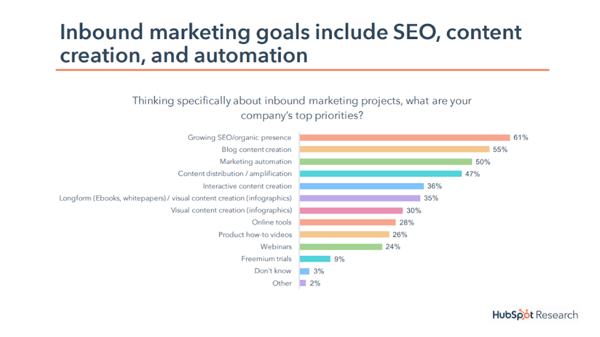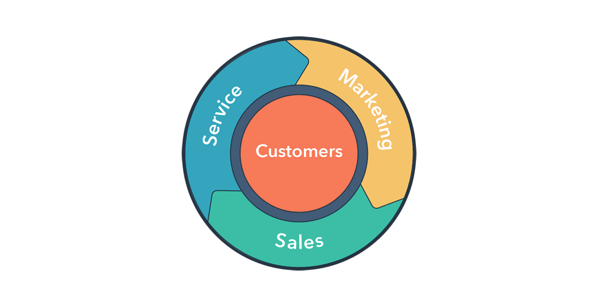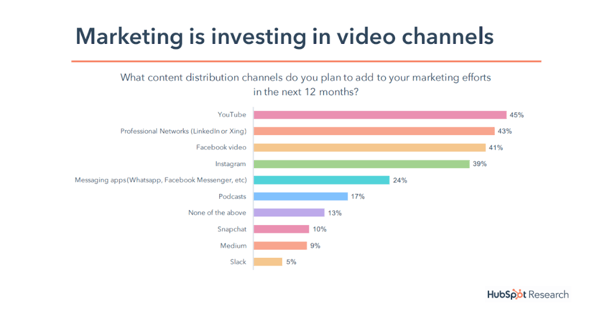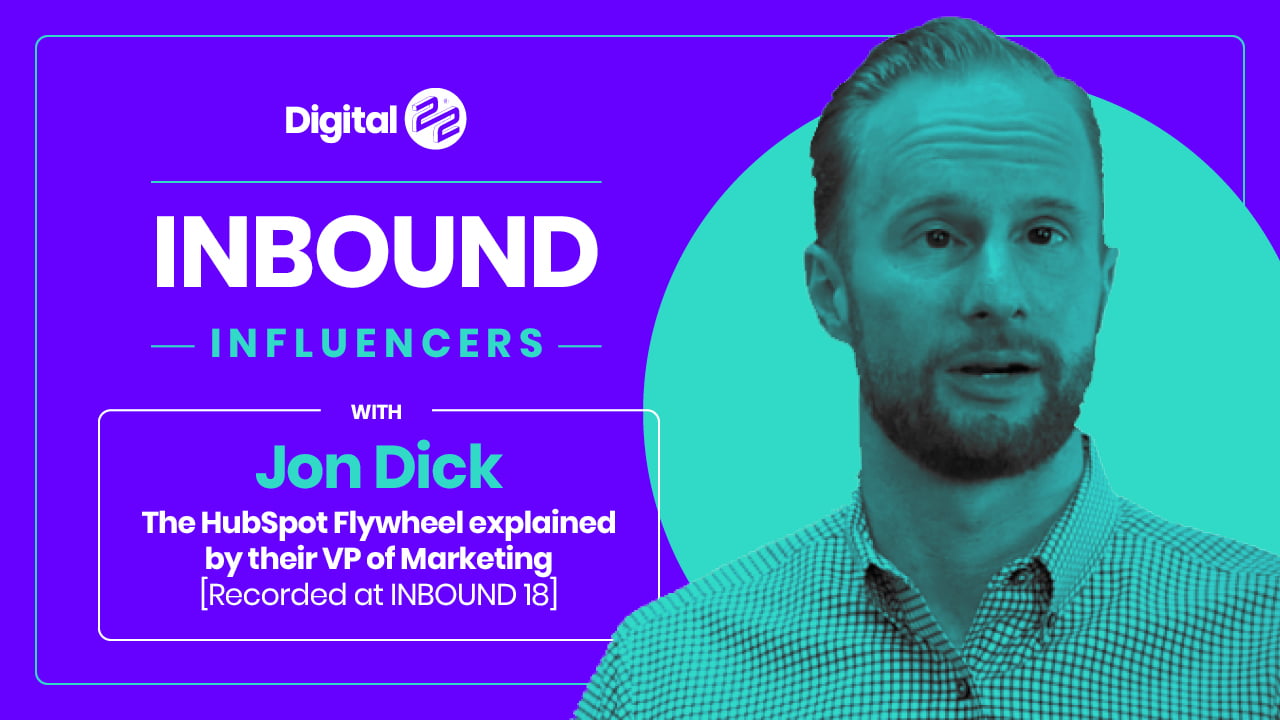And that was that - the Marketing Funnel was no more. Brian Halligan used his INBOUND 18 keynote to...
There are many ways in which we can utilise new methods when working with inbound marketing. Not only will you draw in new customers but also keep the ones you already have. Here’s why inbound marketing is important for the future and some aspects that will need your attention.

If you’re at the starting line when it comes to inbound marketing, then these tactics will put you in a great position. Heading into 2020 there are certain aspects you need to give extra importance to. To find out more about each one in more depth, click on any of the headings below.
- Google, SEO and the algorithm change
- focus on customer success
- Put emphasis on quality inbound video marketing
1. Google, SEO and the algorithm changes
When we’re talking about an algorithm change, you can’t blame marketers for thinking of Facebook right away. While it’s important to keep Facebook algorithm changes in mind, Google also updates its algorithm regularly.
When inbound first grabbed attentions worldwide and everyone jumped from the outbound ship, the tactic that was implemented was SEO keywords - which is now a little old school.
Although it worked in the past, that might not be the case any longer as Google continues to change, with the Medic update of August 2018 and the subsequent changes we’ve seen implemented since then.
Changes to algorithms, changes to content
If you’re still only targeting one keyword with relevant pages, then you’ll fall short in the future if you continue. Google now looks at how well you’ve been writing about a certain topic - it’s all about relevancy.
After the update in June 2019, you now need to look at a number of things:
- Is the content high-quality and relevant to the search?
- Does the content provide factual evidence and trustworthy sources?
- Is the content presented well on the page with easy links?
- Does the content provide value for the consumer?
- Does the content serve the genuine interest of visitors?
Now, the quality around the topic takes precedence. You need Google to look at the content you’ve been producing. If it’s determined that you’re regularly producing quality content and can be trusted, then you’ll find yourselves higher up in search engine results.
Additionally, in October Google implemented the BERT update. This will affect a user’s complicated search queries that depend on context. Google claimed the update is all about improving language understanding, with particular emphasis being put on conversational language.
This update allows Google to better understand the nuance and context of words and match these queries with useful results. Providing context in your content helps Google to determine whether it is helpful in answering the query.
With the increased use of artificial intelligence in determining whether content is relevant or not, your content needs to be satisfying these questions or your ranking may suffer.
Content creation is a top priority
It doesn’t matter if you’re new to inbound or if you’ve been all-in for years, the fact that 55% of marketers see content creation as their top inbound marketing priority after growing SEO and organic presence speaks volumes. It’s time to focus on topic-based content and producing quality content so you own it.

Image from HubSpot’s State of Inbound
Think about it this way. If Google recognises that you’ve consistently been writing to a high standard surrounding a certain topic, then you’re going to have authority over that topic compared to others. It’s also important to link to blogs, like topic clusters, to see the benefits of these algorithm changes.
This means customers will see you as the reliable source when they’re searching for particular topics.
2. Focus on customer success
Although 70% of companies say that closing deals is their top sales priority, inbound success relies on shifting focus towards the customer. This means giving priority to customer success, customer service, keeping them engaged, happy and providing them with useful resources to empower them.
This is key to upselling and growing from your business’ growth point of view, rather than just focusing on bringing in new leads all the time. That’s why the marketing funnel has been ditched and the Flywheel has been implemented, as it gives you a more accurate way of thinking about how customers interact with your business at every stage.
To keep you on your toes, the Flywheel keeps getting updated to more accurately represent your customer’s journey. At the INBOUND 19 event in Boston, we learnt to further think of the Flywheel as a ‘playground,’ courtesy of a workshop by Ashley Faus, Senior Manager of Integrated Media at Atlassian.

“Treat the buyer’s journey as a playground,'' Faus stated. “People can enter and exit as they desire, they can go in any order and they can engage with the content in the ‘wrong’ way.” Efficient marketing isn’t linear. It adapts. It’s about building relationships and providing education.

This is now more important than ever in inbound marketing as the Flywheel acts as the vehicle that lets you understand customer interaction. Every interaction your company has with a customer shapes how they view your business and what they’ll tell others about you. So, moving forward, your marketing strategy needs to reflect that.
This framework gives you the ammo to operate and understand your customers, removing friction from the customer journey. You’ll know the types of content you need to create for your customers, understand their challenges, pain points and other ways to continue serving them.
Using inbound marketing methods helps you get more mileage out of your content by adapting it. We want to see a piece of content linking to related pieces or re-published on new platforms.
And don’t forget - social media should be leveraged alongside to aid distribution. The playground-like Flywheel helps us to visualise all this.
3. Put emphasis on quality video marketing
It’s simple - there needs to be a massive focus on quality video content heading into the future. It’s important because inbound marketing is versatile for content creation as it’s all based around challenges that personas are facing. Not every user is going to want to read a blog or will have the time to do that.
In fact, some might prefer to have the solution in a 30-second video and that can be done relatively easily. Investing in a camera, using screenshare, Zonebox or even Instagram Stories, for example, can be a great starting point to begin emphasising video content creation.
In the past two years alone, content consumption on Facebook has increased by 57%. This shows just how much interest there now is in video content. Along with this, it’s proven that video drives a 157% increase in organic traffic from SERPs.
HubSpot has shown that more and more marketers are focusing on video platforms like YouTube, Facebook Video and even Instagram as content distribution channels to focus on.
Clearly, video content for inbound is finally gaining more importance.

Before diving into it and making it a priority, make sure you identify challenges the personas are facing and understand the personas as a whole. This is what will allow you to create effective video content as you’ll understand the challenges a lot better. Check out our podcast with Vidyard’s video expert Marija Ilic to see how important video is for your company.

The stats to back up the rise of video marketing
Just think about how much video content you consume yourself. Whether it’s training videos at work or Netflix when you get home, video is now a central part of how we all live and work. Video usage is on the rise and these stats should perfectly highlight why a big focus needs to go on video marketing in the future.
- 87% of businesses are using videos as a marketing tool.
- 83% of marketers say that video gives them a good ROI.
- Video production costs shrank in 2018 by 41%.
- 87% of consumers said they’d like to see more video from brands.
- 68% of consumers said a short video is the best way to learn.
With there clearly being an increased demand for video content, it’s important you put an emphasis on quality content creation to boost your inbound marketing efforts. But what else is there to focus on for future marketing methods? How can you see what an inbound marketing campaign can look like over a full campaign?
Find out more about inbound marketing
As important as the above factors are for your future inbound marketing efforts, you’ve just scratched the surface. There’s still so much more to learn about the topic and the techniques you can implement and understand just how important it is moving forward with any marketing campaign.
If you’re curious about utilising inbound for your business and exploring what 12 months of inbound marketing looks like, we’ve got the perfect resource for you.
‘A Year in Inbound’ is a 12-month breakdown of each step in an effective inbound marketing campaign. It will take you through an onboarding process, strategy phases, website builds and SEO, as well as the results you can expect to see.
To download your copy, click the link below.
Blog Updated: 21st Nov 2019



